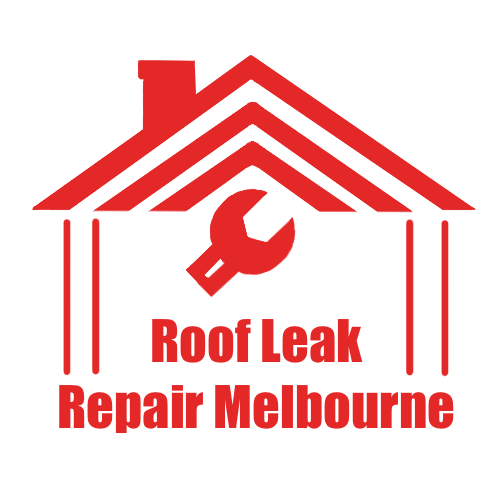When it comes to roof leak detection, you need to know what signs to look for and how to act. Common indicators include water stains, peeling paint, and musty odors. To find leaks, consider methods like thermal imaging and moisture meters, or simply conduct visual inspections. While DIY detection might save you money, professional services often provide more accurate results and avoid costly mistakes. Regular maintenance, such as gutter cleaning and flashing checks, is essential for preventing leaks. Stay informed, and you can protect your home efficiently and effectively. More insights await to help you further.
Importance of Roof Leak Detection
When it comes to maintaining the integrity of your home, detecting roof leaks is vital. Undetected leaks can lead to significant water damage, compromising not only your roof but also the structural integrity of your property.
Vital tips for detecting roof leaks in Melbourne can help identify issues early on. By identifying leaks early, you can mitigate potential issues such as mold growth, wood rot, and insulation damage.
Regular roof inspections help guarantee that your roofing materials remain effective, preventing costly repairs down the line. Addressing leaks promptly not only preserves your roof integrity but also enhances your home's overall value and safety.
Investing in professional leak detection services can save you money and stress by catching problems before they escalate. Don't underestimate the importance of this vital aspect of home maintenance.
Common Signs of Roof Leaks
Identifying roof leaks early is key to preventing extensive damage. You should be on the lookout for common signs that indicate a leak.
Essential roof leak detection tips and techniques can help you identify and address issues quickly. Here are three critical indicators:
- Water Stains: Look for discoloration on your ceilings or walls, often appearing brown or yellow. These stains are a clear sign of water intrusion.
- Ceiling Damage: If you notice peeling paint or sagging areas in your ceiling, it may indicate serious moisture issues.
- Mold Growth: Presence of mold or mildew, especially in corners or along the edges of ceilings, suggests prolonged dampness from leaks.
Methods for Detecting Leaks
Effective leak detection is essential for maintaining the integrity of your roof and preventing costly repairs. One of the most advanced methods is thermal imaging, which uses infrared technology to identify temperature variations caused by moisture intrusion. This non-invasive technique allows you to pinpoint leaks without damaging your roof.
Another valuable tool is a moisture meter, which measures the moisture content in roofing materials. By scanning different areas, you can determine if there's underlying water damage that isn't visible to the naked eye.
Combining these methods increases accuracy, ensuring you catch leaks early. Regular inspections using these techniques can save you from extensive repairs and help prolong your roof's lifespan.
Professional vs. DIY Detection
While advanced methods like thermal imaging and moisture meters are highly effective for leak detection, the choice between professional services and DIY approaches can considerably impact the outcome.
Here's a quick tools comparison to evaluate:
- Cost: DIY tools are generally less expensive, but professional services may save you from costly mistakes.
- Expertise: Professionals bring extensive experience, which can lead to more accurate detection and resolution.
- Time: DIY methods might take longer, especially if you lack the right tools or knowledge.
A thorough cost analysis reveals that while DIY can be budget-friendly, the potential for error could lead to higher long-term expenses.
Ultimately, weigh your skills and resources to choose the best option for effective leak detection.
Maintenance Tips to Prevent Leaks
Many homeowners overlook regular roof maintenance, but it's vital for preventing leaks and extending the life of your roof. To keep your roof in prime condition, schedule seasonal inspections and perform preventive maintenance. Here's a quick guide:
| Task | Frequency | Importance |
|---|---|---|
| Inspect for debris | Bi-annually | Prevents water pooling |
| Check flashing | Annually | Guarantees watertight seals |
| Clean gutters | Bi-annually | Avoids overflow and damage |
| Monitor roof condition | Quarterly | Identifies issues early |
Frequently Asked Questions
How Much Does Professional Roof Leak Detection Typically Cost?
Professional roof leak detection costs vary, but it's often more effective than DIY methods. You'll benefit from specialized leak detection tools that guarantee accurate identification and help prevent further damage, justifying the investment in expert services.
Can Roof Leaks Cause Structural Damage Over Time?
Yes, roof leaks can cause significant structural damage over time. That's why preventive maintenance and early detection are essential. Regular inspections help identify issues before they escalate, protecting your property and reducing repair costs.
What Roofing Materials Are Most Prone to Leaks?
When considering roofing materials, flat roofs and metal roofing are particularly prone to leaks. Flat roofs may accumulate water, while metal roofing can develop seams and fasteners that compromise waterproofing, leading to potential leaks over time.
How Often Should I Schedule Roof Inspections?
You should schedule seasonal inspections at least twice a year. Use an inspection checklist to guarantee all components are assessed, identifying potential issues early and maintaining your roof's integrity and longevity effectively.
Are There Any Warranties for Leak Repair Services?
Yes, many leak repair services offer leak repair warranties and service guarantees. It's essential to inquire about these options, as they provide assurance of quality work and protection against future leaks or issues.
Final Thoughts
To summarize, understanding roof leak detection is essential for maintaining your home's integrity. By recognizing the common signs and employing effective detection methods, you can address issues early on. Whether you choose to tackle the task yourself or seek professional help, regular maintenance is key to preventing leaks. Stay proactive, and your roof will continue to protect you from Melbourne's unpredictable weather, saving you from costly repairs and extensive damage in the long run.
